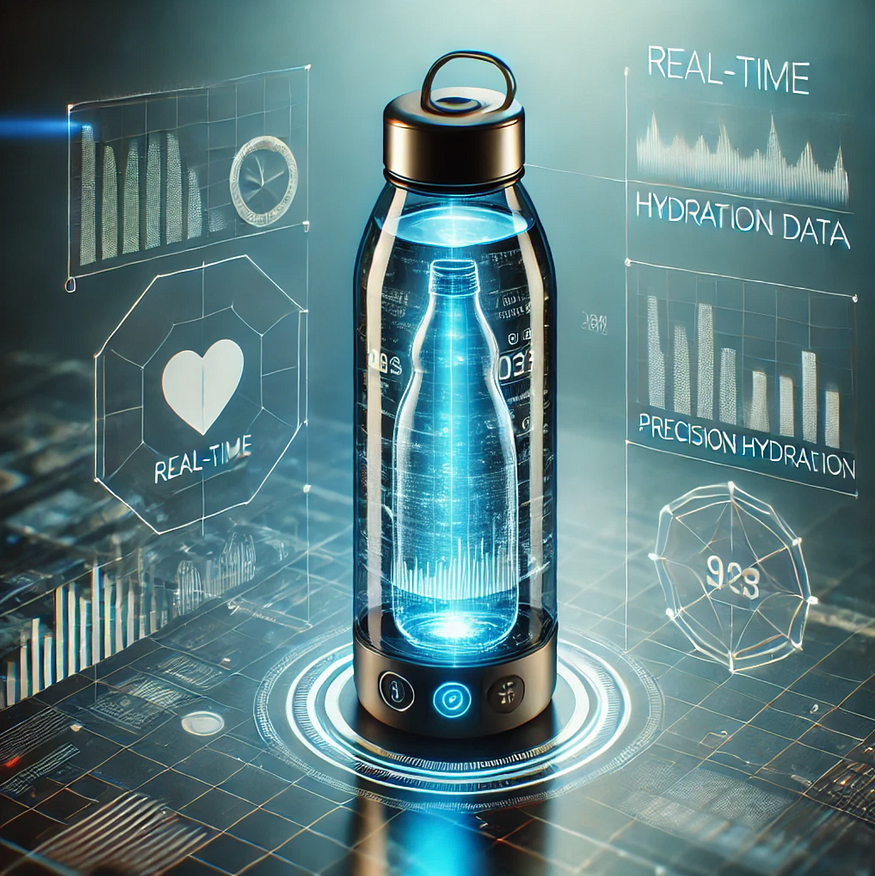The Hydration Revolution Will Transform Your Life By 2030

We’re standing at the threshold of a revolutionary shift in how we understand hydration. The future of personalized hydration isn’t just about drinking more water — it’s about drinking the right water for your specific body at the right time. By 2030, the outdated “8×8” rule will be replaced by precision hydration systems that could dramatically improve health outcomes across the globe.
Why One-Size-Fits-All Hydration Guidelines Are Failing Us
The traditional advice to drink eight 8-ounce glasses of water daily has always been problematic. This guidance fails to account for crucial variables including age, weight, geographic location, climate, physical condition, activity level, and specific health needs. When individuals don’t receive proper hydration tailored to their unique requirements, the health consequences can be surprisingly severe.
Improper hydration leads to more than just thirst. Many people don’t realize dehydration can trigger fatigue, headaches, poor concentration, and mood swings. The more serious complications are even less recognized: increased risk of stroke, kidney problems, higher risk of heart failure and arrythmias, seizures from electrolyte imbalances, and even hypovolemic shock in severe cases. These conditions represent just the tip of the iceberg when it comes to dehydration’s impact on human health.
Emerging Technologies Redefining Hydration

Among the most promising technological innovations in the hydration space is Plasma-Activated Water (PAW). This revolutionary technology treats water with cold atmospheric plasma, creating a liquid with remarkable properties due to reactive oxygen and nitrogen species. Initially developed for food decontamination and surface disinfection, PAW’s potential applications for human health are expanding rapidly.
The advantages of PAW extend far beyond conventional water. Research indicates it may offer enhanced cellular absorption through altered molecular structures, potentially boosting energy levels and brain function. Its mild oxidative properties could help balance free radicals in the body while supporting liver and kidney detoxification. Some studies even suggest PAW’s antimicrobial properties could benefit gut health and digestion by creating a more balanced microbiome. Other studies find it’s potential antibacterial and antiviral uses to replace the need for traditional antibiotic medicines.
Another emerging technology is structured or “magnetized” water systems that organize water into a more coherent, bioavailable state. These systems mimic natural water movement through friction, vortexing, and turbulence, resulting in micro-clustered water that cells absorb more efficiently. The technology shows particular promise in agricultural applications where it significantly improves plant hydration efficiency and growth while reducing water consumption.
Biomarker Tracking: The Future of Precision Hydration

The integration of biomarker tracking technology with advanced hydration solutions represents perhaps the most transformative development on the horizon. Modern breath analysis can already monitor over 800 different biomarkers, providing insights into metabolic conditions, respiratory diseases, and even neurological disorders.
Key biomarkers like acetone, nitric oxide, and various volatile organic compounds offer windows into different physiological states. As this non-invasive diagnostic technology advances, it could eventually connect with personalized hydration systems to deliver precisely what an individual needs at any given moment.
Imagine a near future where a wearable device monitors your hydration biomarkers in real-time, communicating with your smart water bottle to adjust mineral content, pH levels, address vitamin deficiencies, or even introduce therapeutic elements like PAW when needed. This integration of continuous monitoring with responsive hydration represents the true potential of personalized hydration by 2030.
Climate Adaptation and Changing Hydration Needs
The climate crisis introduces another critical dimension to the personalized hydration conversation. Rising global temperatures combined with population growth, mean more people will consume more water, both for drinking and sanitation. The rise of AI and it’s need for water is another evolving impact. This escalating demand will require smarter approaches to water usage.
Technologies like resonant frequency applications could transform water management on both individual and agricultural scales. These systems not only structure water for better bioavailability but also imprint it with specific frequencies that enhance growth and wellness in plants and animals. The agricultural applications are particularly promising, with structured water requiring less volume to achieve adequate hydration while improving crop consistency and yield.
For individuals living in increasingly hot climates, personalized hydration systems will become essential for maintaining health. The current CDC recommendation of drinking 8 ounces every 15–20 minutes during heat waves will likely evolve into more sophisticated, personalized guidance based on individual physiology, activity levels, and environmental conditions.
Social Impact and Global Water Access
Perhaps the most profound potential of personalized hydration technologies lies in addressing global water access disparities. Currently, 700 million vulnerable people lack reliable access to clean drinking water — a problem that personalized hydration technologies could help solve.
Resonant frequency technology could potentially transform highly contaminated water into structured, potable water. These systems could be implemented in well filtration or faucets in underserved communities, simultaneously improving water quality, farming yields, and overall community wellness. The scale of positive impact could be immense if these technologies become widely accessible.
With the global population rising and water scarcity becoming an increasingly urgent challenge, resonant frequency technology presents a promising solution for water conservation. Current advancements suggest that this technology, along with water imprinting, has the potential to reduce agricultural water consumption by approximately 30%, making it a valuable tool for sustainable farming and long-term water preservation.
The Future of Functional Beverages

As consumers gain more knowledge about their personal hydration needs, the functional beverage industry faces both challenges and opportunities. We’re likely to see increasing specialization in hydration products, with beverages formulated for specific health concerns or body systems.
This trend toward specialization will force beverage companies to either become highly niched or develop diverse product lines that address various health requirements. The companies that thrive will be those that successfully balance specialized formulations with appealing taste profiles and sustainable packaging.
The rise of personalized hydration will also likely accelerate the decline of traditional high-sugar sodas and artificially sweetened beverages. As people recognize how their beverage choices directly affect their physical, emotional, mental, and spiritual well-being, they’ll increasingly opt for healthier alternatives that provide tangible benefits.
Data Privacy in the Hydration Revolution
The collection and use of individual biomarker data will inevitably raise privacy concerns as personalized hydration technologies advance. The industry will need robust solutions to protect this sensitive information. One approach might involve blockchain technology to store data anonymously due to its decentralized, immutable, and encrypted nature, with access restricted to medical providers and patients.
HIPAA and other medical privacy regulations will play crucial roles in ensuring that data collected to improve biometric readings and products remains protected. Establishing these protections early will be essential for building consumer trust in personalized hydration systems by protecting PHI (Private Health Information).
Transforming Our Relationship with Water
By 2030, we can expect a fundamental shift in how people think about and interact with water. The growing awareness of personalized hydration needs will foster a higher sense of holistic health, with consumers making more informed choices about both what they drink and how they access it.
We’ll likely see fewer people reaching for bottled water and more carrying reusable bottles equipped with structured water devices or other technologies that enhance water’s beneficial properties. Home filtration systems will become more sophisticated, offering personalized settings for different household members.
As our understanding of hydration’s impact on mental and emotional wellness deepens, maintaining proper hydration will become recognized as a cornerstone of psychological health. The relationships between dehydration, caffeine, sugar intake, and mental well-being will become better understood and integrated into personalized hydration approaches.
The hydration revolution of the next decade won’t just change what we drink — it will transform our entire relationship with water, from a simple survival necessity to a precisely calibrated tool for optimizing health across all dimensions of our being. The companies and technologies that help lead this transformation will reshape not just an industry, but human health on a global scale.
